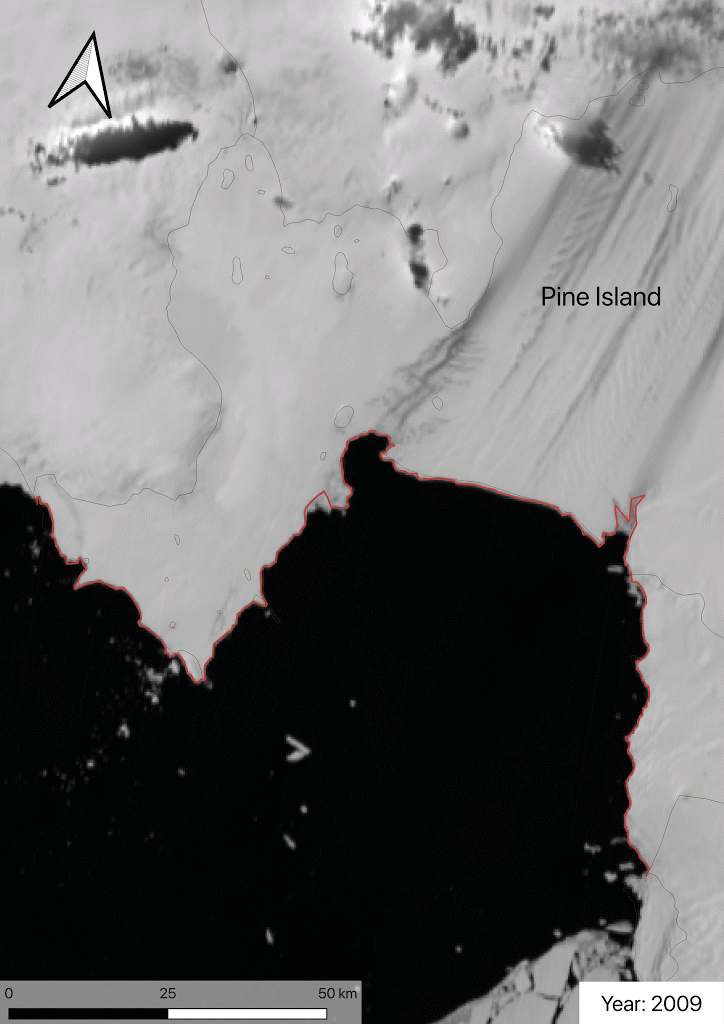Monitoring ice shelves in Antarctica
Ice Shelves are formed when the grounded ice sheet flows out over the ocean, forming a floating platform of ice. Ice shelves in Antarctica are constantly changing due to ice flow causing the ice front to advance, or due to iceberg calving events which cases the ice front to retreat. On this website we have mapped the historical calving front positions on 9 major ice shelves in Antarctica.
Icebergs breaking off ice shelves often form very flat, 'tabular' ice bergs, which are then transported away from the shelf by ocean currents and blowing winds.
In some cases the icebergs are so large that they can become grounded, or stuck on the sea floor beneath the ocean. Iceberg calving is part of the natural cycle of any ice shelf and is not an indicator of ice shelf stability but when whole ice shelves are removed this can trigger the grounded ice behind it to flow more quickly.
On this website we have mapped the historical calving front positions on 9 major ice shelves in Antarctica. Historical calving fronts have been manually delineated from NASA Modis satellite data over the last 10-years, and using the ESA-EU Copernicus Sentinel-1 radar images during the present day.
Related Videos
Contacts
We welcome feedback on our products and the website.
For inquiries of a scientific nature, please contact Dr. Anna Hogg, for inquiries related to web site operations please contact: Alan Muir at a.muir@ucl.ac.uk.



